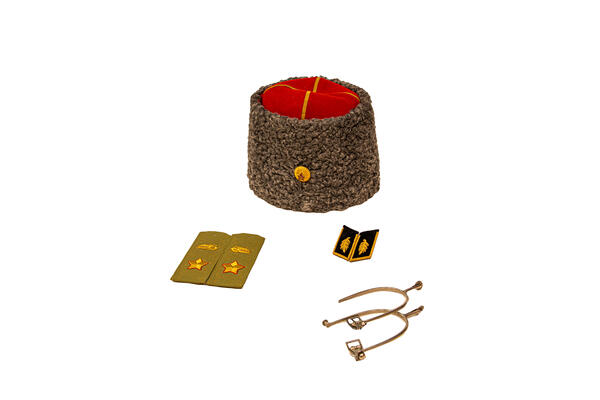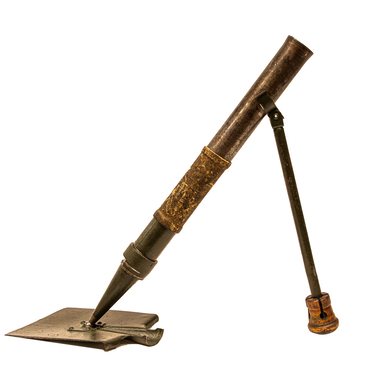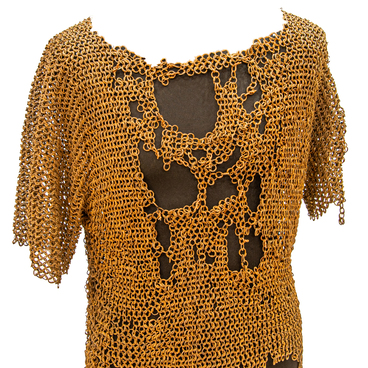The papakha, shoulder marks, and gorget patches were obligatory elements of the uniforms of Soviet generals and marshals. His wife Yekaterina Katukova donated insignia that belonged to the Soviet commander, Armored Forces Marshal Mikhail Katukov, to the museum. Together with her husband, she fought in the battles of the Great Patriotic War of 1941-1945 from Moscow to Berlin in the rank of guards sergeant major of medical service of the 1st Guards tank brigade.
Katukov was born in the village of Bolshoye Uvarovo in the Moscow region in 1900. He graduated from the village school with a certificate of merit, and later he was sent to his relatives in St. Petersburg to work as a part-time bearer of dispatches in the dairy firm of the merchant Sumarokov. In 1917, Katukov took part in the October Revolution. Because of his mother’s death, he returned to his native village, and in 1919 he was called up as a Red Army soldier in the 484th Infantry Regiment of the 54th Infantry Division to suppress the Don Cossack uprising.
During the Great Patriotic War Katukov commanded first the 20th Tank Division and then the 4th Tank Brigade. In combat, he used the method of mobile tank ambushes: at an unexpected moment, they opened fire on the enemy from a camouflaged tank. It was Katukov who owns the first major victory of the Soviet armored forces. In the combat operation near Mtsensk, which lasted from October 4 to 11, 1941, he defeated the third and fourth tank divisions under the command of one of the best German tankers — General Heinz Guderian. Guderian himself said about these battles:
Katukov was born in the village of Bolshoye Uvarovo in the Moscow region in 1900. He graduated from the village school with a certificate of merit, and later he was sent to his relatives in St. Petersburg to work as a part-time bearer of dispatches in the dairy firm of the merchant Sumarokov. In 1917, Katukov took part in the October Revolution. Because of his mother’s death, he returned to his native village, and in 1919 he was called up as a Red Army soldier in the 484th Infantry Regiment of the 54th Infantry Division to suppress the Don Cossack uprising.
During the Great Patriotic War Katukov commanded first the 20th Tank Division and then the 4th Tank Brigade. In combat, he used the method of mobile tank ambushes: at an unexpected moment, they opened fire on the enemy from a camouflaged tank. It was Katukov who owns the first major victory of the Soviet armored forces. In the combat operation near Mtsensk, which lasted from October 4 to 11, 1941, he defeated the third and fourth tank divisions under the command of one of the best German tankers — General Heinz Guderian. Guderian himself said about these battles:



